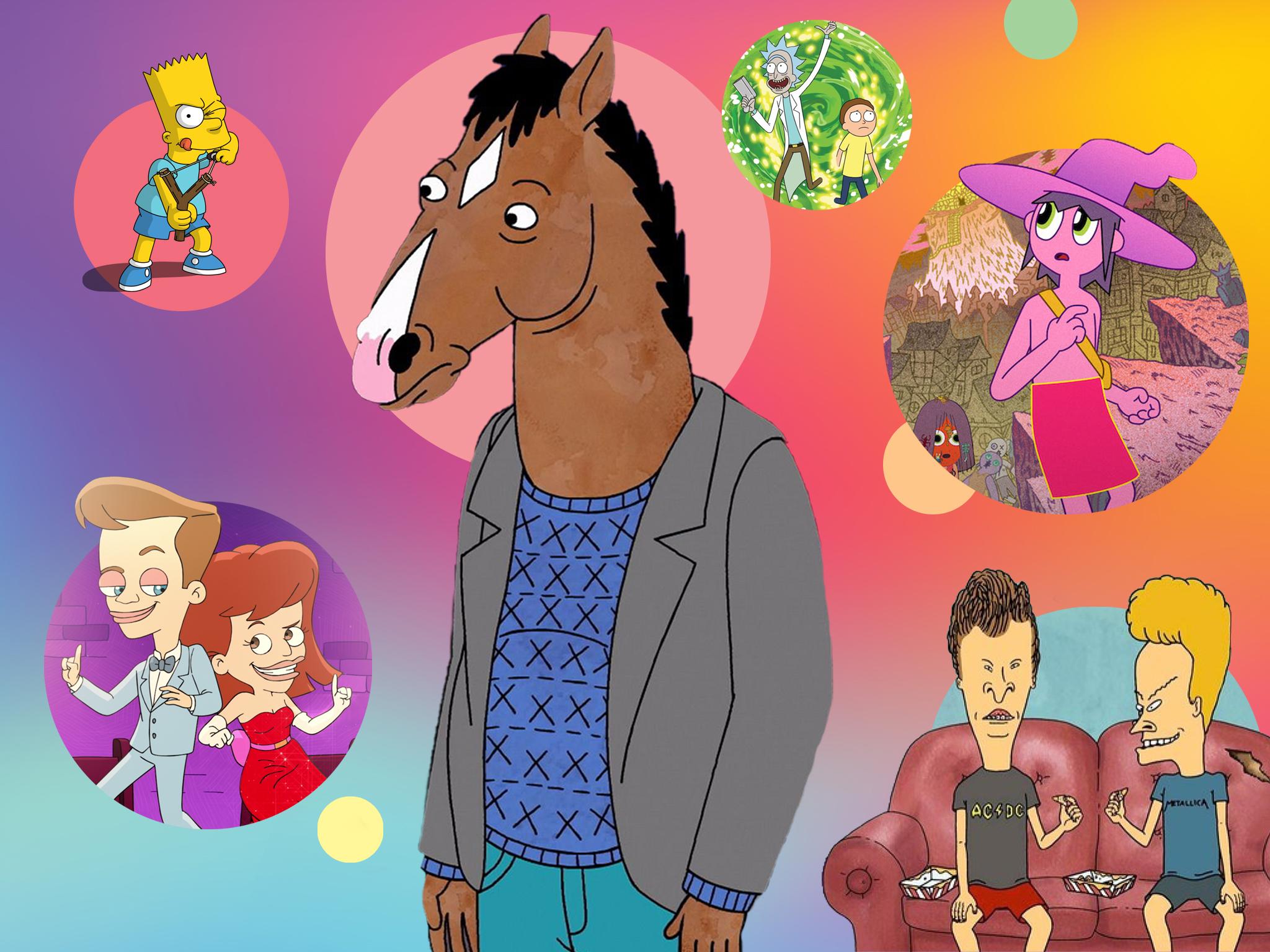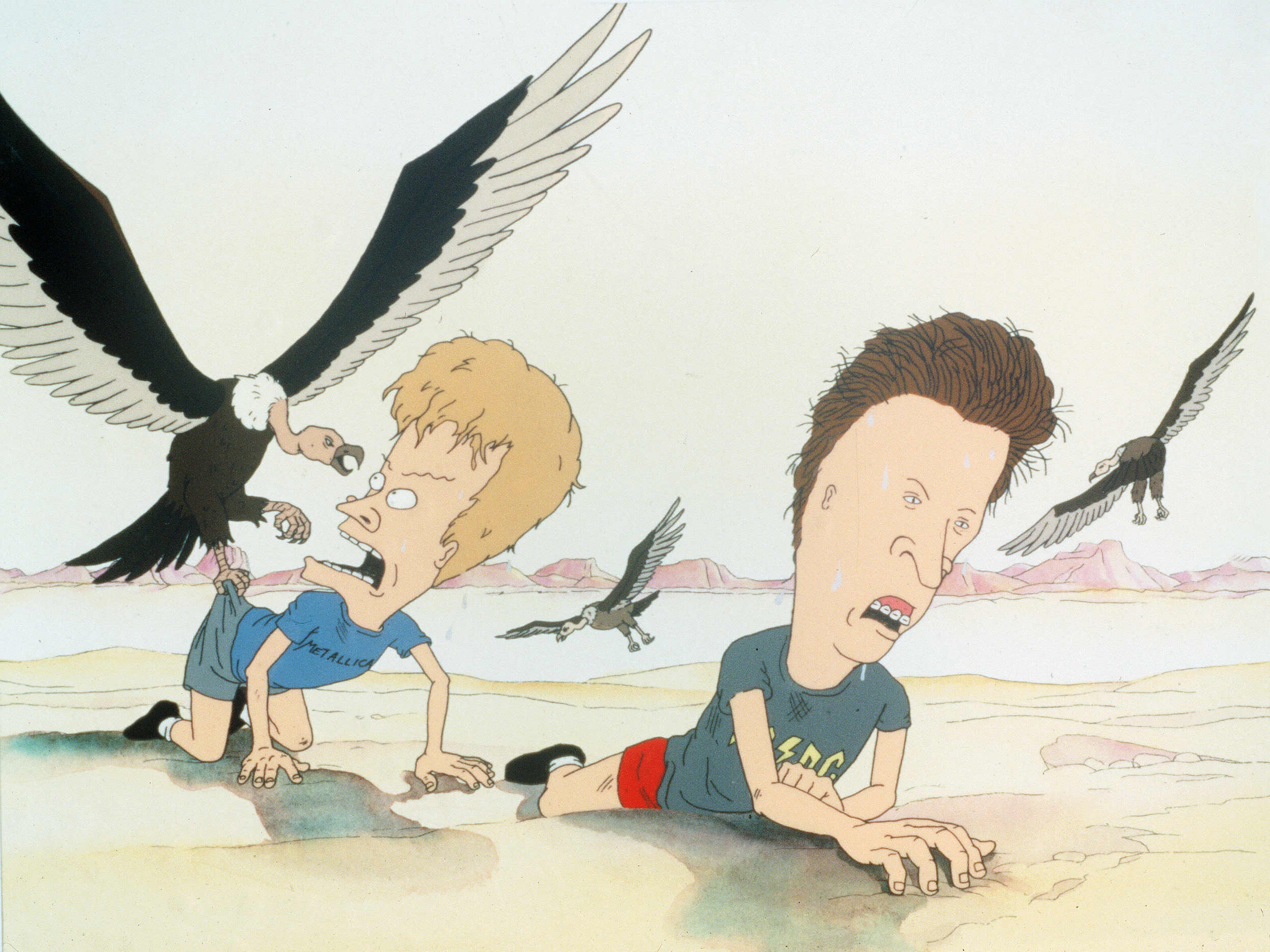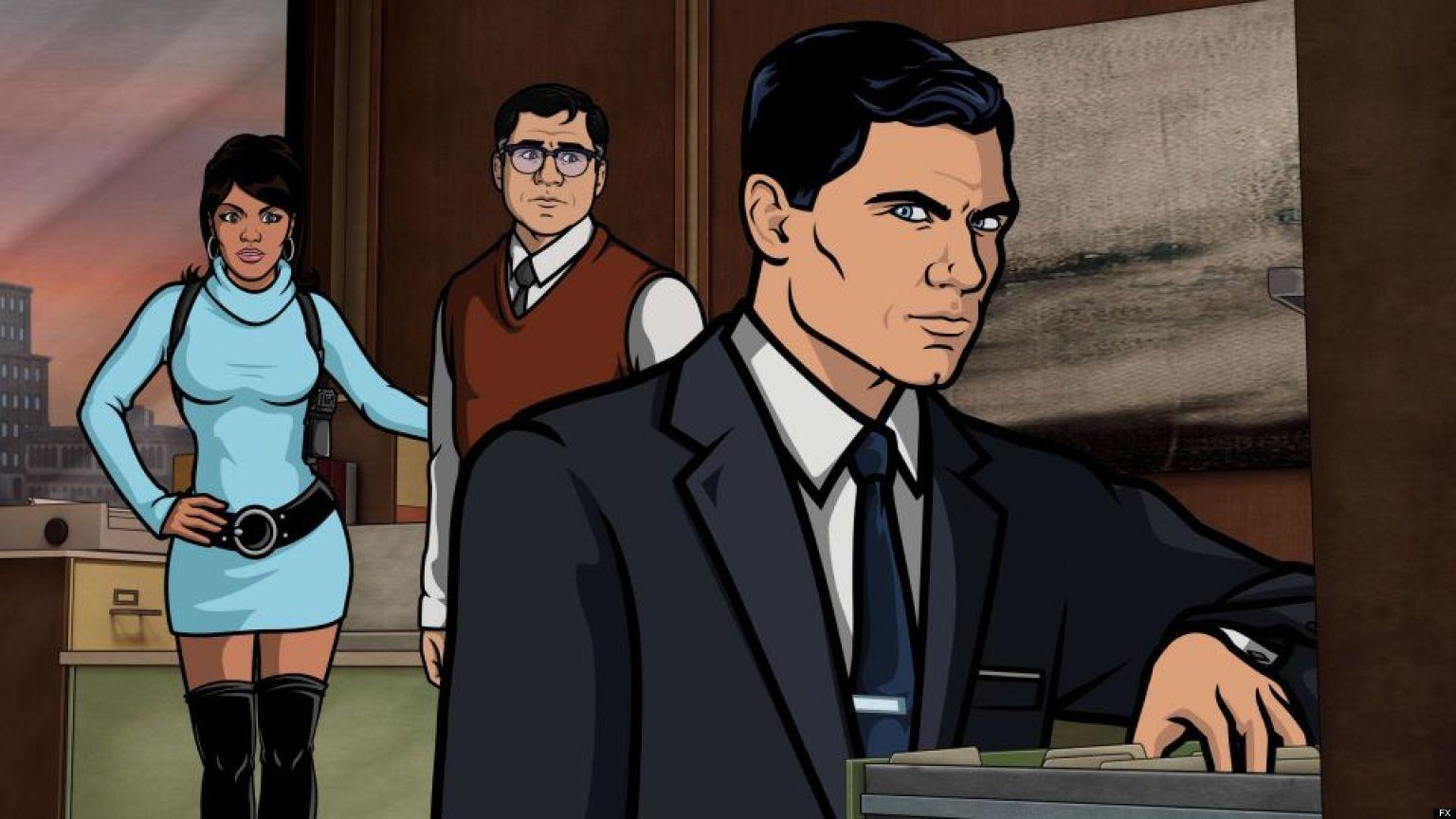Change your toon: How adult animation grew up
Grown-up cartoons have come a long way since the toilet humour of ‘Beavis & Butthead’ and ‘Family Guy’. In fact, they’re getting serious. Annabel Nugent surveys the ‘Rick and Morty’ effect, from ‘Midnight Gospel’ to ‘Crossing Swords’


Your support helps us to tell the story
From reproductive rights to climate change to Big Tech, The Independent is on the ground when the story is developing. Whether it's investigating the financials of Elon Musk's pro-Trump PAC or producing our latest documentary, 'The A Word', which shines a light on the American women fighting for reproductive rights, we know how important it is to parse out the facts from the messaging.
At such a critical moment in US history, we need reporters on the ground. Your donation allows us to keep sending journalists to speak to both sides of the story.
The Independent is trusted by Americans across the entire political spectrum. And unlike many other quality news outlets, we choose not to lock Americans out of our reporting and analysis with paywalls. We believe quality journalism should be available to everyone, paid for by those who can afford it.
Your support makes all the difference.We are living in the golden age of adult animation. Or so everyone says. The splashy phrase was first bandied about in 2017 by publications who pointed towards the neverending run of The Simpsons and to the small but rabid fanbase growing around Adult Swim’s Rick and Morty as evidence that adult-targeted cartoons were on track for astronomical success.
Three years later and there’s little doubt we’re living the prophecy as far as American cartoons are concerned. As streaming wars rage on, Netflix, Amazon and others like them are throwing millions of dollars into a format that had up until recently been relegated to three-hour blocks on a network’s graveyard shift.
This month, the critically lauded FX series Archer released its 11th season. Just last week Netflix offloaded its latest offering, the puerile gym-teacher saga Hoops, with spy-comedy Q-Force set to follow close behind. We live in a time where a cartoon about a talking bronco – that’ll be BoJack Horseman – is spoken about in the same breath as iconic cult comedies Peep Show and Veep. But how did we arrive at this so-called golden age? And what comes after?
While producing cartoons for audiences over the age of 12 isn’t a novel concept, it is a relatively recent one. In the Nineties, The Simpsons paved the way for cartoons’ entry into mainstream primetime television and earned the format its place among people past puberty. But although Matt Groening’s beloved toon dabbled in cheeky innuendos and some adult themes, it’s a far cry from the kind of bawdy jokes and vulgar humour we associate with adult animation today.

For evidence of that kind, enter the ludicrously lewd Beavis and Butt-Head, which grunted its way onto MTV in 1993. The show’s crude humour and cheap animation style fleshed out a lot of the more risque tropes that Groening’s sitcom never quite broached. The end of the decade saw networks pull the trigger on adult animation to release seminal cartoons including King of the Hill and South Park, whose success encouraged a string of new shows. Family Guy was a standout, its dysfunctional family setup spearheaded by Peter Griffin, a dad and husband so lousy he made Homer look like a saint.
For the most part, this first generation of truly adults-only cartoons (Family Guy, South Park, King of the Hill, American Dad) featured some variation on their yellow predecessors: lazy fathers, overworked mothers and trouble-making kids engage in a series of hijinks that are neatly tied up at the end of 22-minutes. Storylines were born in sexual comments, slapstick humour, staid silences with prolonged punchlines stretched to the point of absurdity and then pointlessness (see the multiple fight scenes between Peter and a human-sized chicken across Family Guy’s 18 seasons). But the shape of it was so well defined and reproduced so prolifically that the format’s mould was all but set in sharpie: adult animation became shorthand for a raunchy comedy featuring toilet gags and non-PC humour.
The most recent iteration of adult animations, however, offers viewers something that lasts longer than the bad taste of an offensive punchline. When Rick and Morty debuted on Adult Swim in 2013, there was nothing to suggest it would be any different. The basic story is this: Rick Sanchez is an old-school mad scientist (Doctor Who if he was an a**hole, constantly drunk and crossed with Malcolm Tucker) who drags his grandson, a worrywart named Morty, across the multiverse on intergalactic adventures. The show sounded funny, but it also sounded just like any other adult cartoon sent out on TV’s conveyor belt.
But something unexpected happened. While I wept with laughter, despite myself, at its fart jokes and pitch-black humour, I also marvelled at Rick and Morty’s surreal alternate universe and inimitable ways of storytelling. Stranger still was the show’s fluency in emotions, with some episodes leaving me sad for its doodled protagonists long after the credits rolled.
The Emmy-nominated BoJack Horseman is also a show that’s applauded for its laughs as much as its howling despair. In an episode chronicling the memories of BoJack’s mother, an elderly horse-woman with Alzheimer’s, faces are scratched out; scenes are dipped in and out of without any semblance of order; changing colours signal bright sparks of recollection before they’re overtaken by a brown fog. Animation carried the episode’s emotional weight spectacularly. Undone, a cartoon from Amazon which explores the mental health struggles of a young Latina woman, is another which illustrates how these very funny shows can also break your heart.
This capacity for adult animations to be poignant is common knowledge amongst its fans. Saying Rick and Morty is really a show about nihilism is as commonplace – and annoyingly pompous – as saying BoJack Horseman is actually a show about depression. (You can’t get through half a sentence criticising either before a frenzied fan tells you in all caps that you’re just too stupid to understand it.) But it’s true that a hallmark of all the recent acclaimed adult animations has been found in what happens when they don’t aim for laughs at all. Thematically, shows like these are willing to let go of the gags in order to explore dark places that its predecessors never dared broach.

Some have done away with the jokes altogether. One of Netflix’s surprise hits this year has been Midnight Gospel, an animation set over recordings of real-life podcast interviews. It follows Clancy Gilroy, a spacecaster (video podcaster in space) as he travels planets interviewing guests for his spacecast. Instead of sexist punchlines and zany zingers, Midnight Gospel delivers thoughtful ruminations on grief, vegetarianism, drugs, religion, self-awareness and death – all packaged up in a cutesy cartoon. The series, which was released on 4/20 this year, holds a rating of 93 per cent on Rotten Tomatoes and has been described as “a trip for stoners and non-stoners alike”.
We’re likely to see more shows like Midnight Gospel crop up as the format balloons beyond comedy, and with the help of affluent streaming platforms looking to capitalise on an increasingly popular style of TV. According to a recently published report on the industry, almost half of all forthcoming adult animated series belong to genres outside of comedy.
Practically too, recent cartoons have strained against the format’s perceived confines and triumphed in doing so. Creators don’t have to abide by 22-minute episodes with ad breaks. They can stretch and squeeze storylines, which, clipped from their sitcom roots, can be weirder and sadder and more introspective than ever. Characters are developed. The recent tide of adult animation has also demonstrated its ability (and desire) to be rid of the form’s conventions altogether: one episode of BoJack took place entirely underwater and without a word of dialogue, while the past two seasons of Archer have consisted of one long dream sequence – a conceit that would kill a live-action series before fans even had a chance to angry-tweet about it.
Success breeds success and where there’s money to be made, streaming platforms will sniff it out. At Hulu, alien comedy Solar Opposites recently received a two-season order with its Nicholas Hoult-led stop motion Crossing Swords getting the go-ahead for its next season only a week after the first premiered in June; Netflix’s hilarious (and sometimes stomach-turning) puberty comedy Big Mouth will mature with a ripple season renewal for series four, five and six, while viewers wait impatiently for more Midnight Gospel. Apple TV’s first animated comedy Central Park debuted this summer and was well-received. Even Netflix’s cancelled Tuca and Bertie is being given a second chance on Adult Swim.
Adult animation is also set to benefit from TV’s renewed sense of nostalgia; classic American cartoons Ren and Stimpy, Daria, Clone High and Beavis and Butt-Head have all been picked up for reboots or spin-offs so far this year. While Netflix’s international push has meant western audiences are being exposed to the format’s foreign exports, broadening its scope and growing an appetite for more of its kind. In January, Netflix signed a landmark deal to stream the entire library of legendary Japanese animator, Studio Ghibli.

The form has also proven itself to be a port in the Covid-19 storm. While live-action productions have been forced to delay and/or adjust to pandemic conditions – EastEnders will reportedly require CGI in almost every shot in order to adhere to filming regulations – their doodling counterparts have been mostly unaffected. Animators and voiceover artists are able to work in isolation with relative ease. Chris McCarthy, president of the ViacomCBS group that owns Comedy Central, called cartoons “almost pandemic-proof” – which is as high a praise as any nowadays.
And so it appears that the stars have aligned for adult animation. A nostalgic audience, pandemic-proof production and the commercial success of its less conventional harbingers make for a cartoon future that will likely be as weird as it is wonderful. But although cartoons might be on their way to growing up, history suggests the fart jokes will linger.
Join our commenting forum
Join thought-provoking conversations, follow other Independent readers and see their replies
Comments